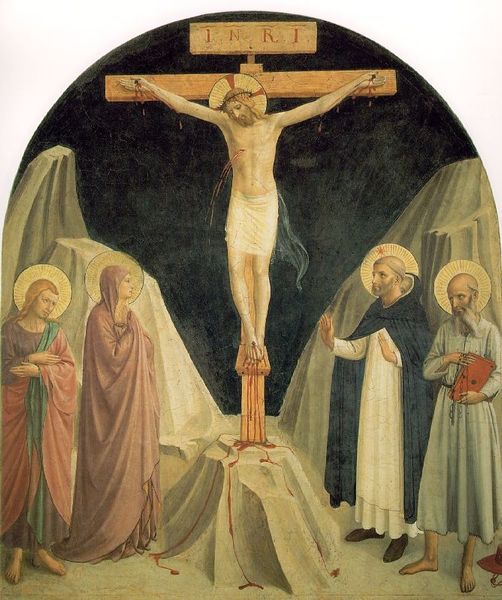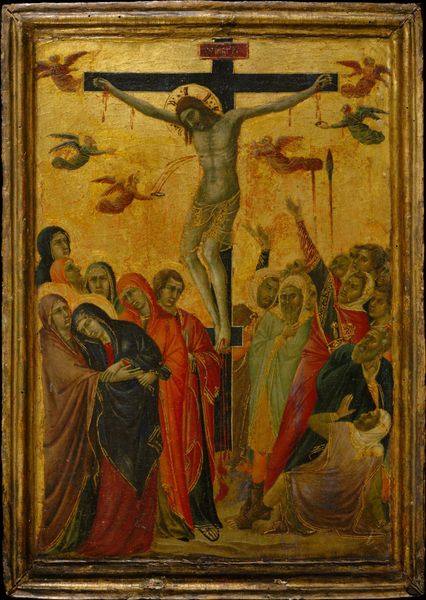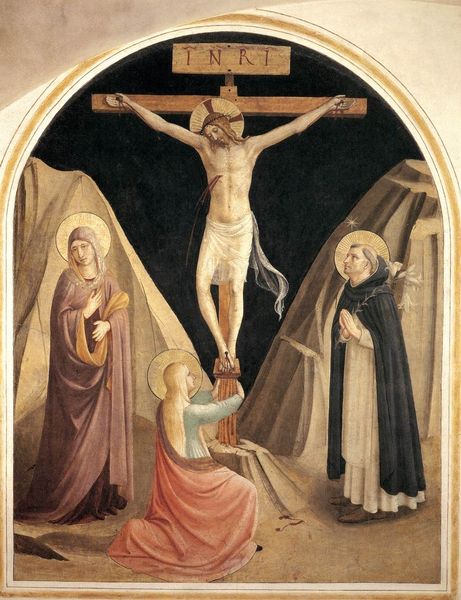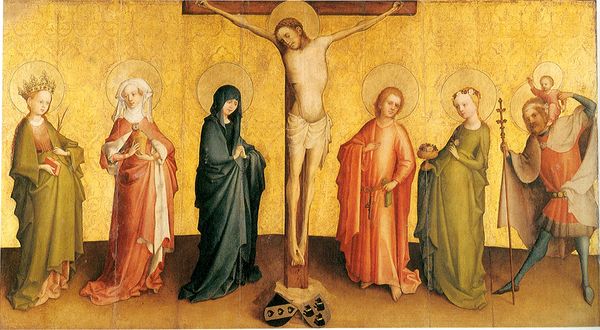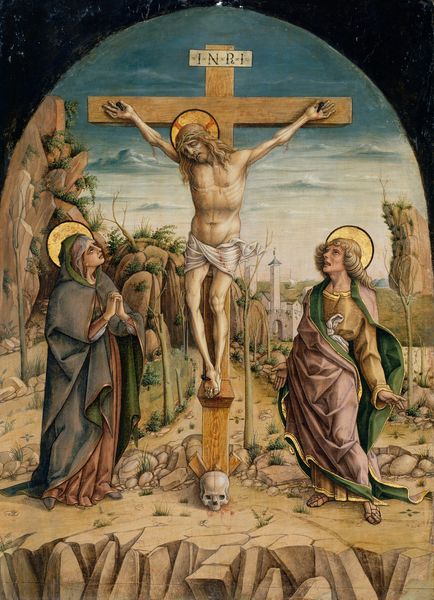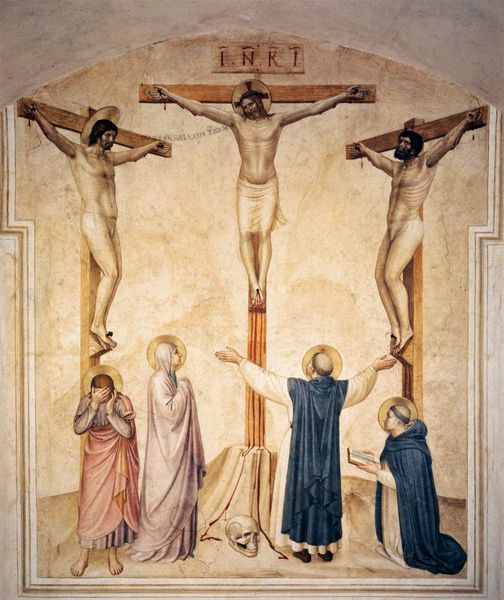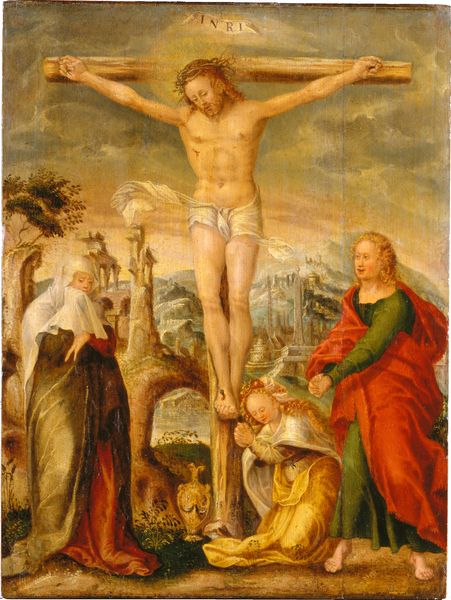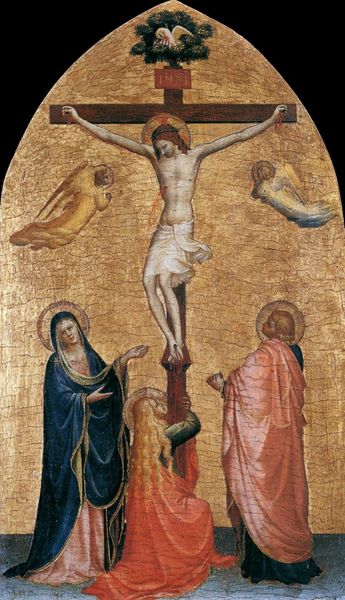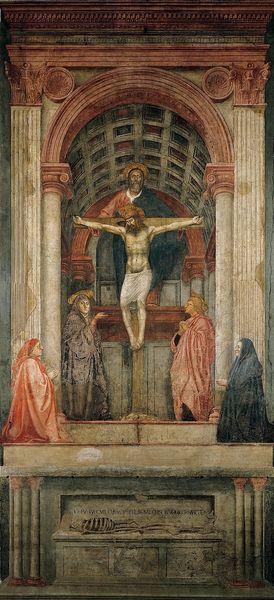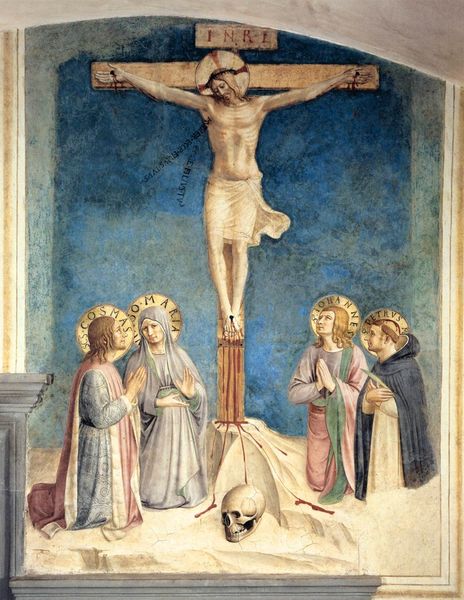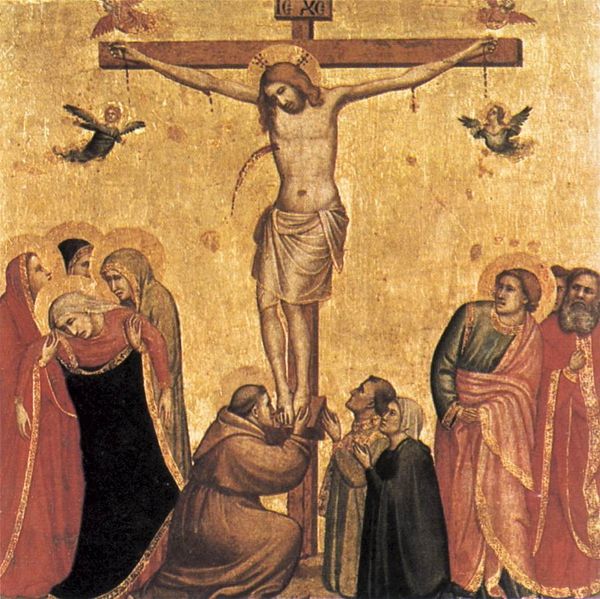
Pala di Monteripido 1502
0:00
0:00
pietroperugino
National Gallery of Umbria (Palazzo dei Priori), Perugia, Italy
painting, oil-paint, fresco
#
portrait
#
narrative-art
#
painting
#
oil-paint
#
figuration
#
fresco
#
oil painting
#
jesus-christ
#
christianity
#
history-painting
#
italian-renaissance
Copyright: Public domain
Pietro Perugino rendered this altarpiece using oil paint. It was an innovative medium at the time, allowing for meticulous detail. Focusing on the work’s materiality helps us appreciate Perugino's technical skill and labor-intensive process. The luminous quality of the painting is achieved through layers of translucent glazes, which required careful grinding and mixing of pigments with oil. This technique allowed Perugino to depict the figures with a soft, idealized quality, seen in the delicate rendering of skin tones and drapery. Note the Virgin Mary’s blue robe, made with the costly pigment ultramarine, derived from lapis lazuli. The figures are precisely drawn with careful attention to anatomical accuracy and the interplay of light and shadow, characteristic of the Renaissance style. The Pala di Monteripido testifies to the economic system of Renaissance Italy. Perugino's mastery was possible because of his skill with materials, but also a sophisticated workshop structure, and the patronage system. Without the support of wealthy patrons, such complex and expensive works would never have been possible.
Comments
No comments
Be the first to comment and join the conversation on the ultimate creative platform.
